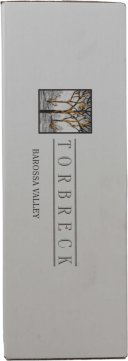Chateau Margaux 1er cru classe
Château Margaux is a 1er Cru Classé (first growth) estate of Bordeaux. The Grand Vin is renowned for its enthralling perfumed elegance, finesse and layered complexity. A Cabernet Sauvignon blend with a minor component of Merlot and a smattering of Cabernet Franc and Petit Verdot, fermentation occurs in oak vats followed by maturation in 100% new barrels for approximately 22 months. Since its acquisition in 1978 by the Mentzelopoulos family, the quality and international reputation of Château Margaux has soared to even greater heights.
Vieux-Chateau-Certan
Domaine Armand Rousseau
Tenuta Dell'ornellaia Masseto
Chateau Latour Pauillac Premier Grand Cru Classé
Château Latour is situated in the heart of the Médoc wine region, about 50 km north-west of Bordeaux, where the legend of the vineyards of Bordeaux began. The Château’s prime terroir, l’Enclos, overlooks the Gironde Estuary which, over the centuries, has given the vineyard its geological complexity and, on a daily basis, ensures a mild climate. In the years since 1993, under the leadership of the Pinault family, the estate’s owner, significant changes have been made with a view to maintaining Château Latour’s pursuit of excellence in the wines that it produces. Dark ruby in colour with a very elegant nose with beautiful aromatic purity. Generous and powerful on the palate with a velvety mouthfeel, full of silky tannins. Brimming with energy, the finale is superbly precise with fabulous length.
Château Cheval Blanc Saint-Émilion
Without a doubt one of Bordeaux's most famous vineyards, Cheval Blanc lies on the border of Pomerol and is also easily the most important estate in St-Émilion. Uniquely a blend dominated by Cabernet Franc, Cheval Blanc's wines have a powerful bouquet which is spicy and rich which is followed by fruit that is soft, mellow and liquorous. Matched only by Pétrus in the realm of vigour and concentration, Cheval's exuberance is not to be missed. With this latest release, the 2009, the wines are bordering on immortal. A blend of 60% Merlot and 40% Cabernet Franc, this super-smooth, velour textured and opulent red wine shows rambunctious flavours of raspberries, blueberries, liquorice and a smidge of menthol. Will be fascinating to watch this
Bruno Giacosa BG AA Falletto R/Riserva
Dont miss this rare chance to secure a magnificent wine from a top producer thats in seriously short supply. Made by an acclaimed winemaker at the top of their game, this is a slice of wine history you dont want to miss. Add it to your collection while you can.
Torbreck RunRig Shiraz
The flagship of the Torbreck stable. Recently been elevated to 'Exceptional' status in Langton's Fine Wine Classification, it is a wine of utmost power and density. Famous for rich concentration and opulent power, this exceptional Australian Shiraz is as popular abroad as it is at home. Definitely one to place in the cellar and simply forget about - let the patience reward you over 10 or more years time.
Tenuta dell'Ornellaia Bolgheri Superiore Rosso D O C
Founded in 1981 by Lodovico Antinori and named after the grove of flowering ash trees that surround the winery, the estate over looks the Tyrrhenian Sea with views stretching to islands of the Tuscan Archipelago and as far as Corsica. Sitting adjacent Tenuta San Guido (producer of Sassicaia) this is one of the estates that helped put Bolgehri on the map, along with Lodovicos older brothers Solaia and Tiganello, as well as Sassicaia. There are 3 wines in the range, the flagship Ornellaia; its second label, Le Serre Nuove; and its entry-level gem, Le Volte. Grape Varieties in 2014: 45% Cabernet Sauvignon, 38% Merlot, 10% Cabernet Franc, 7% Petit Verdot. The 2015 vintage comprised 53% Cabernet Sauvignon, 23% Merlot, 17% Cabernet Franc, 7% Petit Verdot.
Château Mouton Rothschild Pauillac
Château Mouton Rothschild is the work of one man, the legendary Baron Philippe, who is solely responsible for this giant of Bordeaux. Taking charge in 1923 until his death in 1988, he created something the world will always be in debt for. He also started the tradition of getting an artist to design a label for every vintage, a tradition that continues to this day. In 2009, the wine almost transcends perfection. A quite low alcohol percentage given the ripeness of the fruit, the bouquet is reminiscent of cigar box and graphite with violets and cassis playing a part. The palate is both restrained and concentrated, a impressive result indeed. The structure of the wine is hidden somewhat by the exuberant fruit, yet it is that structure that will see this extraordinary wine cellar for the good part of half a century!






















































